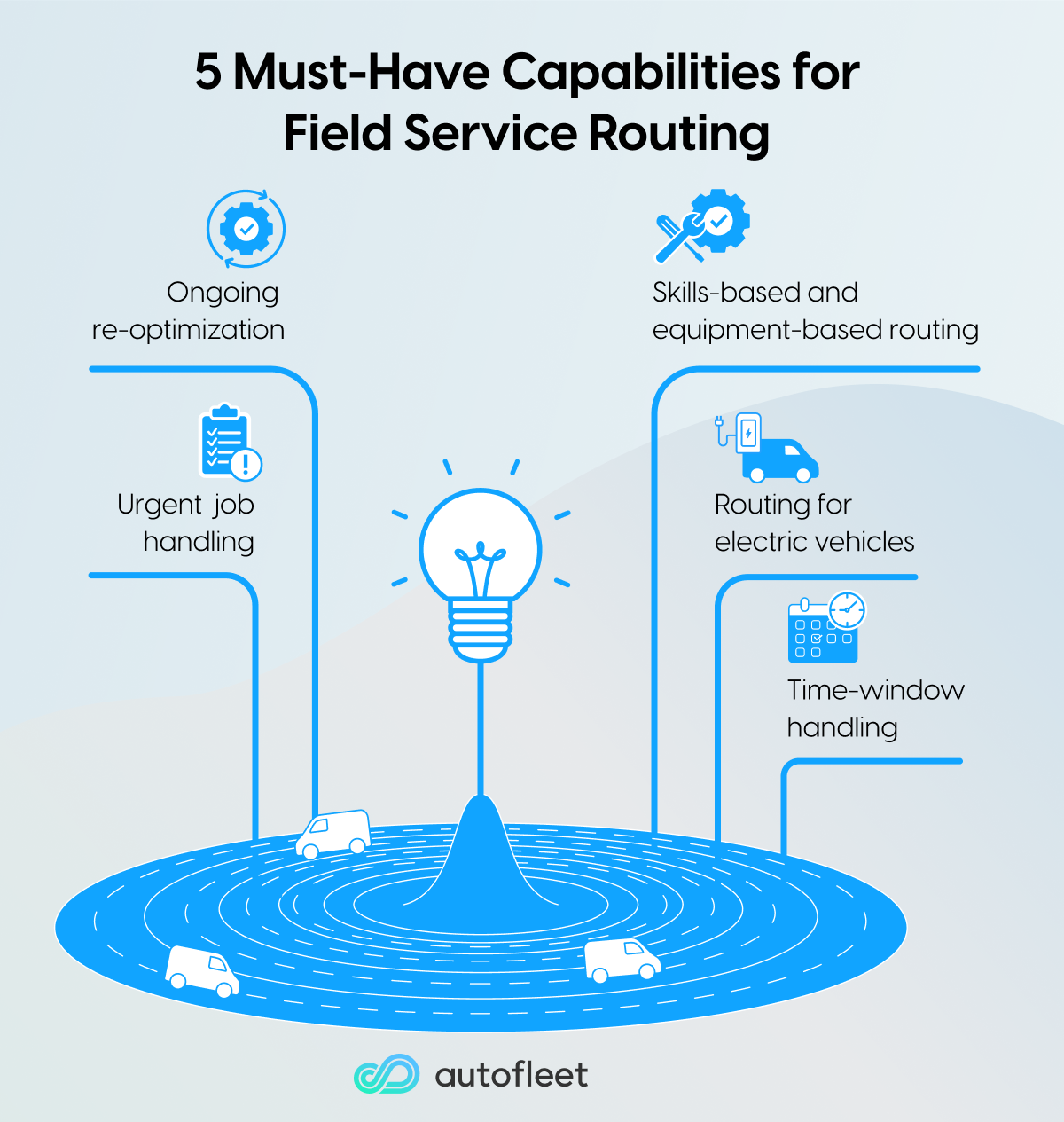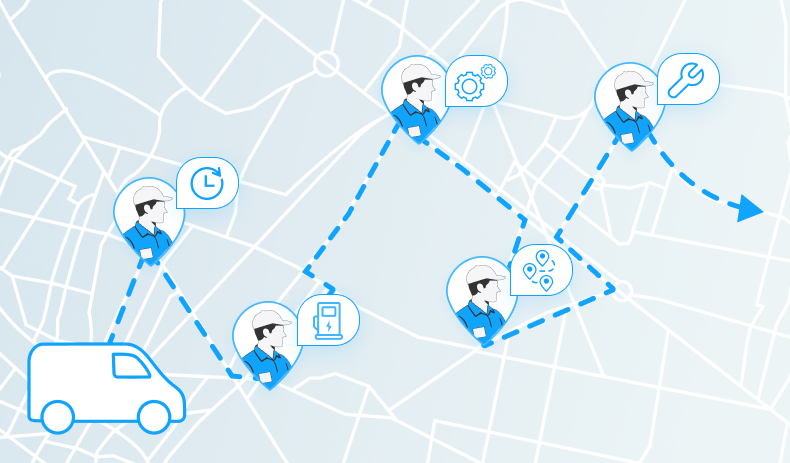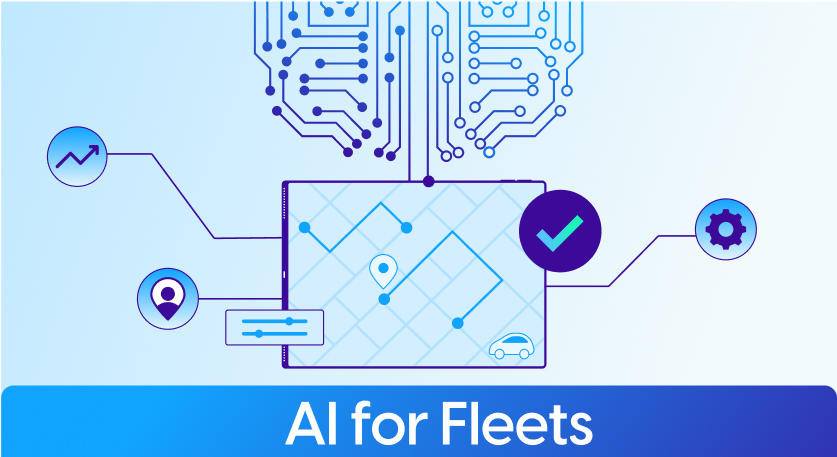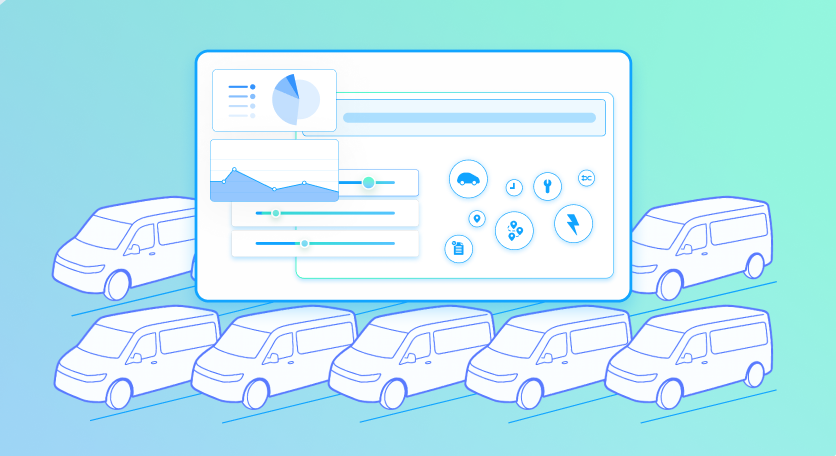







5 Core Capabilities to Look for When Choosing Field Service Routing Software
Key Insights:
- Dynamic Re-optimization is the core capability for real-time operational efficiency.
- Multiple variables including technician skills and equipment need to be optimized to ensure the right technician is matched to the right job.
- Modern fleets must ensure they can handle strict time windows and EV charging needs.
When your field service fleet struggles to stay on top of its job schedule, you know you’re in trouble. Over the course of a day, even the smallest changes can affect performance: Traffic causes delays, a malfunction takes a vehicle offline, and urgent tasks disrupt even the most carefully planned schedule.
This makes field service routing a multi-objective optimization problem. You’re trying to protect SLAs, reduce travel time, respect technician skills, fit within site hours, avoid overtime, and handle urgent jobs all at once.
When every job is shaped by a set of constantly shifting constraints, fleets need an optimized dynamic routing solution that constantly re-optimizes throughout the day based on all available information.
5 features to look for in an optimized field service routing solution
Modern route optimization software comes with a range of tools and capabilities to help manage job matching, dispatching, and routing. Here are the 5 capabilities you need in order to ensure your field service routing solution gives you the best results.

1. Dynamic ongoing route and schedule re-optimization
Things change quickly on the road, jobs get complicated, or take a lot less time than expected. If you are tied to a fixed plan, you are bound to bleed time and money. AI-powered dynamic routing continuously monitors real-time information to ensure the fleet operates as efficiently as possible, while also improving ETA accuracy.
2. Reoptimizing to handle urgent and high-priority jobs
Not all changes stem from conditions in the field. Sometimes you need to change your plans because an unplanned urgent job comes in, or a high-priority VIP client requires special care. When reviewing field service routing tools, consider how the system incorporates new requests into existing plans. The solution must be able to absorb last-minute work, reshuffle assignments, and re-optimize based on new information to minimize disruption.
3. Skills-based and equipment-based routing
Without skills and equipment-based routing, there’s a chance an unqualified technician will be sent to a job, or one could get there without the necessary tools. When dispatchers are reacting manually to changes in high-pressure situations, this mistake can easily be made. If the system understands technician certifications, equipment requirements, and job complexity, however, it can assign work based on capability rather than proximity. This reduces rework and increases first-time fix rates.
4. Routing field services for EV and mixed fleets
Electric Vehicle (EV) routes need to be optimized differently from traditional Internal Combustion Engine (ICE) car routes. A dynamic routing system can handle both vehicle types and anticipate when an electric vehicle will need to charge and make plans based on current range, charger availability, charging time, and the overall impact on utilization. This keeps the fleet moving during busy periods and prevents avoidable downtime.
5. Time-window handling
To ensure customer satisfaction, you should treat your service windows as fixed constraints that should not be moved. When a routing engine sees the time windows you committed to in your SLAs as a hard constraint, it optimizes routes to ensure you stay within them. This can also allow you to commit to tighter arrival windows without increasing operational risk, as the algorithm “knows” it needs to ensure your field service personnel get to your clients on time.
Better field service performance requires integrations

A reliable indicator of whether fleet service optimization software will succeed is how well your data flows. If all your information lives in disparate systems with no integration, you will not be able to optimize your operation. You need to bring all your data into a single source of truth.
By combining information from ERP or CRM systems, ticketing, telematics, and GPS, an AI-powered optimization tool becomes even more intelligent. The more sources of data feeding routing, the more effectively it works.
Don’t overlook driver and customer experience
For technicians, the biggest benefit of modern routing is predictability. Straightforward job sequences, accurate ETAs, fewer mid-drive reshuffles, no wrong addresses or double booking, and improved productivity. Add integrated job details, e-forms, and photo capture, and technicians spend less time on admin and worrying about the road and more time completing work.
This is an important part of customer service and SLA management too. Customers get more reliable ETAs, automated updates, and tracking links. All of which reduces call volume and increases satisfaction, and allows time windows can be tightened to provide better service.
See the bigger picture with improved control
When routing, dispatching, telematics, and CRM data live in one place, operations teams can stop working on reactive fixes. They can see patterns, address structural issues, and fine-tune resource allocation — all of which reduce long-term cost and improve field service fleet performance.
Improved visibility and control eliminate the guesswork and manual workarounds that slow teams down, and can prevent costly mistakes. Real-time re-optimization keeps the day on track and ensures your operation can adapt to whatever happens next.

Table of сontents
Stay up to date!

Stay Up To Date!



.png)
.png)







